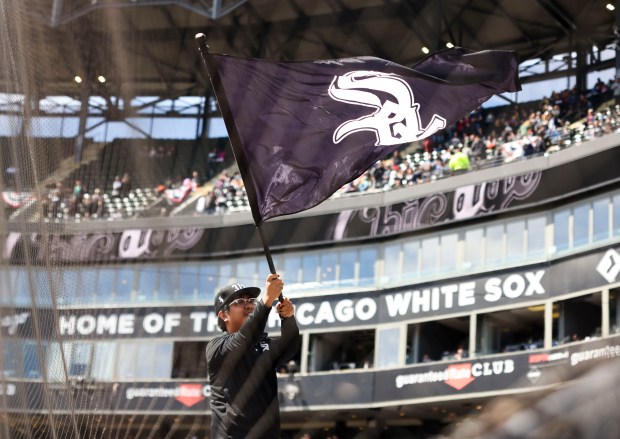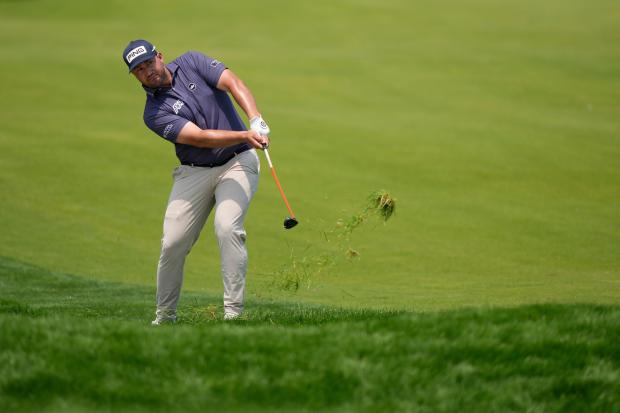GLENDALE, Ariz. — Dylan Cease and Michael Kopech probably won’t be around when the White Sox open their proposed South Loop ballpark years from now.
Cease has been the subject of trade rumors all offseason and might not even make it to opening day on the Sox roster. Kopech will be a free agent after 2025, and even if he makes it that far, the Sox aren’t known for handing out long-term extensions for their starting pitchers, as Carlos Rodon and Lucas Giolito learned.
But Cease and Kopech began their major-league careers on the South Side at Sox Park and have developed an affinity for the ballpark that’s unloved by so many Sox fans — and apparently Chairman Jerry Reinsdorf as well.
“To me it’s home, so I always look forward to going to it,” Cease said Saturday at Camelback Ranch. “Are there things that can be improved? Yeah, probably. But that’s like most things in life.”
Kopech said “the atmosphere on how the stadium is set up is pretty cool, pretty unique” among major-league parks.
“Personally I like how our batter’s eye is set up,” he said. “It’s always been one of my favorite stadiums. I’ve kind of gotten used to it, I guess. With it being home, it’s hard to replicate the same feeling walking into a brand new park for the first time.”
Cease and Kopech have seen how electric Guaranteed Rate Field can be when its filled and the season is on the line. Game 3 of the 2021 American League Division Series against the Houston Astros was one of the best days in the ballpark’s 32-year history.
While there is some nostalgia now from former Sox players for the old Comiskey Park, as evidenced by the “Last Comiskey” documentary, few Sox players or coaches lamented the end in the late 1980s, even as many fans were heartbroken over its pending demolition.
Former bench coach Ed Brinkman once complained to Tribune Sox beat reporter Ed Sherman: “You can’t see a thing from our dugout. If you’re sitting on the bench, you can’t see the outfield, and you can barely see second and first base. There’s no other dugout quite that bad. It’s definitely the worst seat in the house.”
A White Sox waves a flag before a game against the Giants on April 6, 2023, at Guaranteed Rate Field.
After threatening to move to St. Petersburg, Fla., the Sox received public funding to build the new Comiskey Park, which we were told would be state-of-the-art and provide players with many amenities the old park was lacking. The players liked the new facility, but the altitude of the upper deck drew much criticism, and the generic structure — without any view of the Chicago skyline — was widely panned. A year later the Baltimore Orioles opened Camden Yards and ushered in the era of retro parks.
Even after a renovation fixed some of the issues and made Sox Park more fan-friendly, it has been difficult for the team to draw in most years. They ranked 24th in attendance in 2023 with an average of 21,405 per game after finishing 19th in 2022 (24,704). The last time the Sox averaged more than 30,000 was in 2008 (30,877), which was the last time they made the playoffs before 2020, a season played in empty ballparks because of the COVID-19 pandemic.
The Sox are moving relatively quickly with their plans for the new ballpark, which they hope to build at “the 78” site in the South Loop. Renderings were released recently, and Crain’s Chicago Business reported Friday that Reinsdorf is expected to ask for around $1 billion in public money for funding, a subsidy unlikely to win over weary taxpayers who saw the Sox and Chicago Bears receive public money for the new Comiskey Park and a Soldier Field renovation.
A Sox spokesman said Saturday that the team had no comment on Crain’s report.
The lease for Guaranteed Rate Field ends in 2029, with an option year in 2030, so there is time for the Sox to get things in place before they have to find a new home.
But unlike the late 1980s, when Reinsdorf could count on political pals such as Gov. Jim Thompson and House Speaker Mike Madigan to twist arms and adjust the clock to get a deadline deal done, it’s a much different environment now for the city and the state. Gov. J.B. Pritzker must consider his future political aspirations before handing out money to a team worth $2 billion.
As the leaks continue, the stadium issue should be on the front burner as the rebuilding Sox head into the 2024 season. Convincing fans to come to games will be a tough sell if the team gets off to a poor start. And except for the much debated cheap seats in the upper deck, some wonder whether the Sox really need a new ballpark anyway.
Kopech said he heard about the new stadium plans but admitted he hasn’t followed it much.
“I hope I’m around for it, but who knows?” he said. “If everything works out well …”
Cease has seen the renderings for the proposed South Loop park and came away impressed.
“It looked really cool,” he said. “It would be hard to argue that it would not be an upgrade on ours. But for me, this has been my home for the last few years, and I personally don’t mind going there.”
Cease and Kopech said they’re fans of the old-school ballparks and mentioned Fenway Park and Wrigley Field as their favorites.
“I like the nostalgia of the old ones,” Kopech said. “Fenway and Wrigley are pretty unique. I’m not a fan of the new Yankee Stadium. It feels a little depersonalized. The older ones like Fenway and Wrigley feel like more of a baseball atmosphere.”
Cease agreed that some of the newer ballparks that have opened in his career aren’t up to his vision of what fans or players want.
“They almost feel like shopping malls to me,” he said. “They don’t have that baseball character, like a Fenway or Wrigley or Dodger Stadium. Most of the stadiums have something unique about them. I like Pittsburgh and the (San Francisco) Giants stadium is really cool.”
It’s going to be a long summer for the Sox on the field and the political front as the team fights for relevancy and a new state-of-the-art ballpark.
Stop us if you’ve heard this before.





